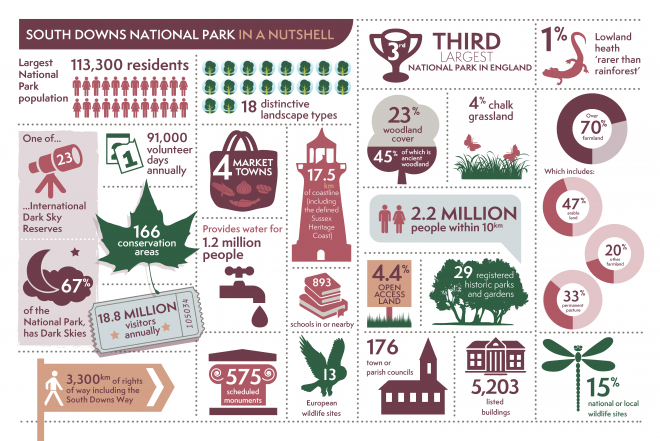Key Facts
- The South Downs National Park is the newest of the UK’s 15 National Parks.
- The South Downs National Park officially came into being on 31 March 2010. However, the idea of a National Park in the South Downs can be traced all the way back to 1929.
- In 2016 the National Park was granted International Dark Sky Reserve status, making it one of the best places in the country to view the night sky. Today, we are one of only 23 such Reserves in the world.
- The National Park is home to a number of globally important habitats, including lowland heath, described as rarer than rainforest.
- Woolmer Forest, a lowland heath site, is the only place in the country to have all 12 of the UK’s native amphibian and reptile species.
- Around 4% of the land in the National Park is chalk grassland. Since the Second World War, the UK has lost over 80% of its chalk grassland.
- The South Downs is home to a number of rare species, including the Adonis blue butterfly that thrives in chalk grassland.
- The South Downs Way is one of 15 National Trails. However, it is the only National Trail to lie entirely within a National Park
- It is thought that the chalk ridgeline of the South Downs Way has been used by people for more than 6000 years.
- Cissbury Ring, just north of Worthing, is the second largest hillfort in England. It is a Scheduled monument due to its Neolithic flint mines and the remnants of the Iron Age fort.
- The South Downs is the most populous of the UK’s National Park. 113,000 live and work within the Park’s boundaries with an additional 2 million people living within 5km of the Park.

